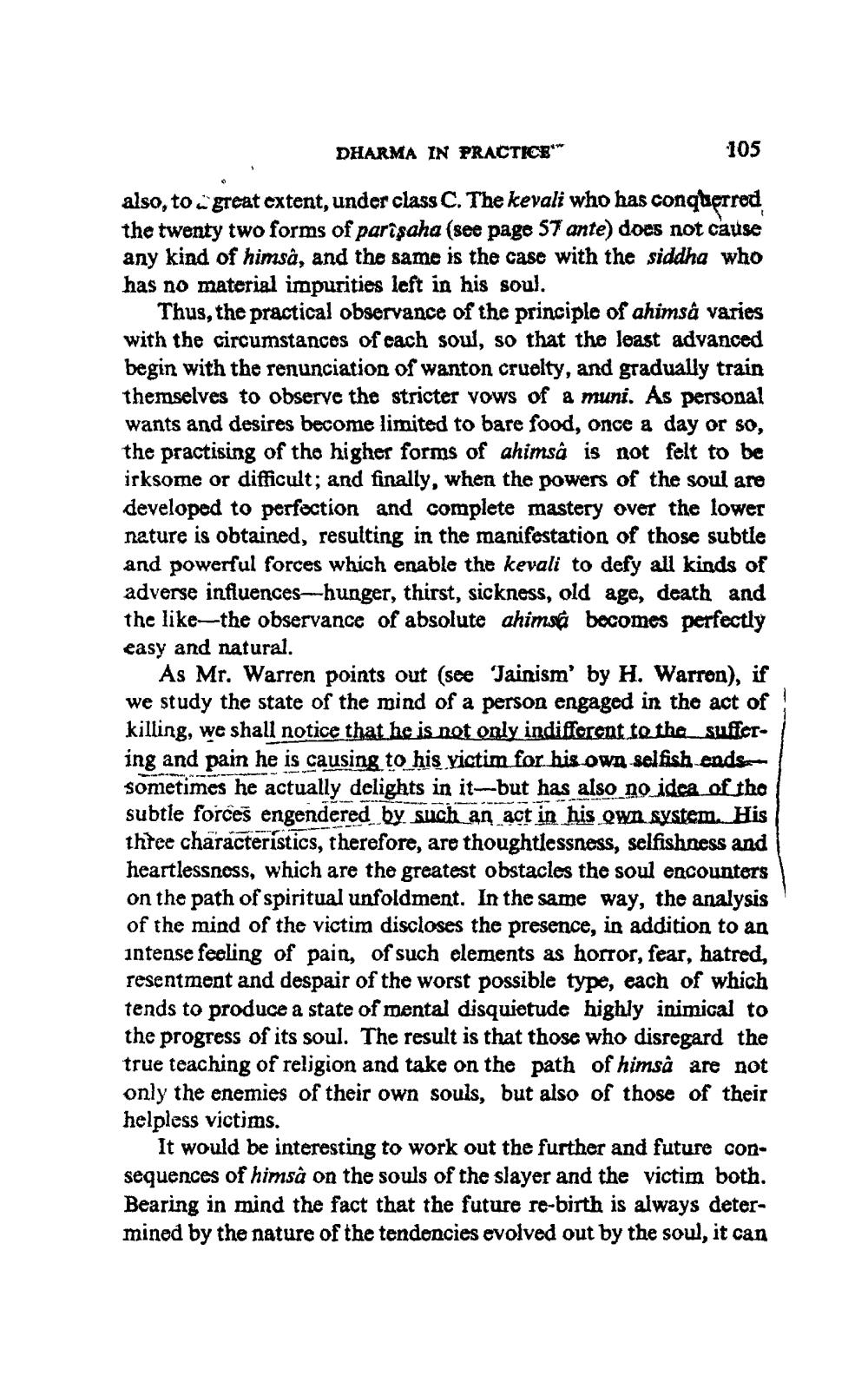________________
DHARMA IN PRACTICE**
105
also, to great extent, under class C. The kevali who has conquerred the twenty two forms of parisaha (see page 57 ante) does not cause any kind of himsa, and the same is the case with the siddha who has no material impurities left in his soul.
Thus, the practical observance of the principle of ahimsa varies with the circumstances of each soul, so that the least advanced begin with the renunciation of wanton cruelty, and gradually train themselves to observe the stricter vows of a muni. As personal wants and desires become limited to bare food, once a day or so, the practising of the higher forms of ahimsa is not felt to be irksome or difficult; and finally, when the powers of the soul are developed to perfection and complete mastery over the lower nature is obtained, resulting in the manifestation of those subtle and powerful forces which enable the kevali to defy all kinds of adverse influences-hunger, thirst, sickness, old age, death and the like the observance of absolute ahimsa becomes perfectly easy and natural.
As Mr. Warren points out (see Jainism' by H. Warron), if we study the state of the mind of a person engaged in the act of killing, we shall notice that he is not only indifferent to the suffering and pain he is causing to his victim for his own selfish ends sometimes he actually delights in it-but has also no idea of tho subtle forces engendered by such an act in his own system. His thtee characteristics, therefore, are thoughtlessness, selfishness and heartlessness, which are the greatest obstacles the soul encounters on the path of spiritual unfoldment. In the same way, the analysis of the mind of the victim discloses the presence, in addition to an intense feeling of pain, of such elements as horror, fear, hatred, resentment and despair of the worst possible type, each of which tends to produce a state of mental disquietude highly inimical to the progress of its soul. The result is that those who disregard the true teaching of religion and take on the path of himsà are not only the enemies of their own souls, but also of those of their helpless victims.
It would be interesting to work out the further and future consequences of himsa on the souls of the slayer and the victim both. Bearing in mind the fact that the future re-birth is always determined by the nature of the tendencies evolved out by the soul, it can




